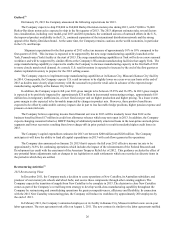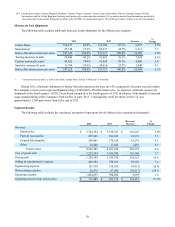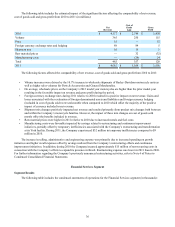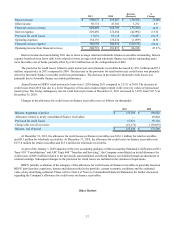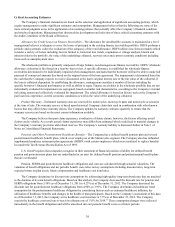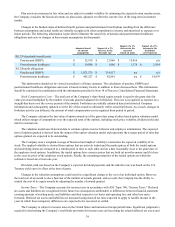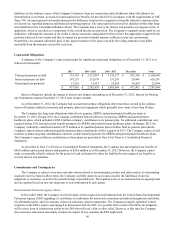Harley Davidson 2012 Annual Report Download - page 32
Download and view the complete annual report
Please find page 32 of the 2012 Harley Davidson annual report below. You can navigate through the pages in the report by either clicking on the pages listed below, or by using the keyword search tool below to find specific information within the annual report.
32
Interest income decreased during 2012 primarily due to lower average retail finance receivables outstanding. Interest
expense benefited from lower debt levels related to lower average retail finance receivables outstanding, a more favorable cost
of funds, and a $5.3 million lower loss on the extinguishment of medium-term notes as compared to 2011.
The provision for credit losses was unfavorable by $5.2 million in 2012 as compared to 2011. The retail motorcycle
provision increased by $6.6 million on smaller allowance releases during 2012 as compared to 2011, although both years
experienced favorable credit performance. The provision for credit losses related to wholesale motorcycle finance receivables
increased by $3.0 million in 2012 primarily due to larger dealer performance-related allowance releases in 2011 as compared to
2012. The wholesale and retail motorcycle provision increases were offset by decreases in the provision for credit losses related
to other retail receivables.
Annual losses on HDFS’ retail motorcycle loans were 0.79% during 2012 compared to 1.20% in 2011. The decrease in
credit losses from 2011 resulted from changes in underwriting and collections, as well as a lower frequency of loss. The 30-day
delinquency rate for retail motorcycle loans at December 31, 2012 increased to 3.94% from 3.85% at December 31, 2011.
HDFS has not experienced a year-end 30-day delinquency rate below 4.50% in over ten years and believes the credit quality of
its retail portfolio will remain strong in 2013(1).
Changes in the allowance for credit losses on finance receivables were as follows (in thousands):
2012 2011
Balance, beginning of period $ 125,449 $ 173,589
Provision for credit losses 22,239 17,031
Charge-offs, net of recoveries (40,021)(65,171)
Balance, end of period $ 107,667 $ 125,449
At December 31, 2012, the allowance for credit losses on finance receivables was $101.4 million for retail receivables
and $6.2 million for wholesale receivables. At December 31, 2011, the allowance for credit losses on finance receivables was
$116.1 million for retail receivables and $9.3 million for wholesale receivables.
HDFS’ periodic evaluation of the adequacy of the allowance for credit losses on finance receivables is generally based on
HDFS’ past loan loss experience, known and inherent risks in the portfolio, current economic conditions and the estimated
value of any underlying collateral. Please refer to Note 6 of Notes to Consolidated Financial Statements for further discussion
regarding the Company’s allowance for credit losses on finance receivables.






